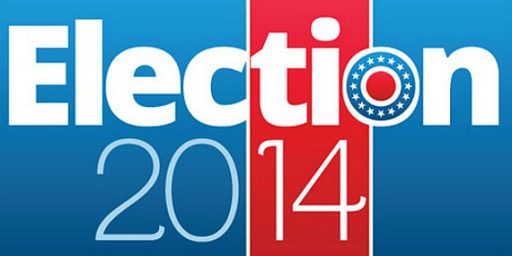Brian Nichols in Custody
Brian Nichols, who shot and killed a judge and sheriff’s deputy in an Atlanta courthouse yesterday was surrounded in North Atlanta. The ATF just announced that they have him in custody. Fox News Channel is doing live coverage.
So far, no Internet coverage of the capture. GoogleNews should have more soon.
The most recent coverage otherwise is this AP report,
Police searching for a man suspected in a courthouse triple slaying said a U.S. customs agent was discovered shot to death in north Atlanta on Saturday, and his blue pickup truck, pistol and badge were missing. Officials were trying to determine if the slaying was related to the courthouse rampage Friday. The body was found in the area where suspect Brian Nichols used to live.
“We don’t know if this is the same suspect,” Fulton County Police deputy Chief G.D. Stiles said. “Whoever is driving this pickup truck is a cop killer.”
Nichols, 33, was suspected of killing a judge and two other people at a downtown courthouse Friday, then stealing a reporter’s car. He apparently never took the reporter’s green Honda Accord from the parking garage where he stole it and attempted more hijackings afterward, police said.
Jeff Quinton continues to live blog the television coverage. I’ll be out of pocket most of the day.






Brian Nichols, Bart Ross, Perceived Unfairness (Courts Under Attack)…
Taking a life is wrong!
Fighting the justice system outside of its contour isn’t rational. Freedom has provided civil liberties when used correctly removes insurmountable barriers such as segregation, discrimination and the like. Although many Americans have formed certain perceptions about the judiciary that represents an overall lack of trust, one must prove their argument within the structure provided and advocate change through civilized conduct. There are many methods of mentally or physically withdrawing from a hostile situation. The most common, attribute racist behavior to ignorance and chose to educate as a response to discrimination, which can give a sense of empowerment.
A spate of violence in the judicial system has many uneasy and on edge. Security at federal, state, and local courts across the country has been increased in the wake of the shooting of three people in Atlanta (Judge Rowland Barnes, his court reporter and a Fulton County deputy) today and last week’s killings of U.S. District Court Judge Joan Humphrey Lefkow’s husband and mother in Chicago.
Since the Sept. 11, 2001 terrorist attacks, courthouses today are already secured by electronic surveillance systems, armed security officers, and metal detectors and scanning devices at every public entrance. In short, Judges are often the target of threats from defendants or litigants. They worry that their addresses and other personal information are easily accessible using the Internet and public records. And, there are trials that have the potential for additional security concerns.
In Chicago, police concluded that 57-year-old Bart Ross, a Poland immigrant, harbored a grudge against Judge Lefkow because she dismissed his malpractice lawsuit. In Atlanta, observers say a second rape trial was going badly for 34-year-old Brian Nichols, an African-American. It was his second trial in as many weeks. The first ended in a mistrial after a jury was unable to reach a verdict (8 to 4 in favor of acquittal).
Public confidence plays a significant role in the ability of courts to perform their function effectively. Courts must rely for enforcement of their decisions on retaining sufficient respect from individual citizens so that the vast majority will comply voluntarily. Perceptions influence, even shape, behavior. Both Bart Ross and Brian Nichols appear to have expressed a concern about possible unfairness. Note, more than one-third of all Georgians see African Americans as receiving worst treatment than others by the court system. See “Essay: Race and the Georgia Courts: Implications of the Georgia Public Trust and Confidence Survey for Batson v. Kentucky and its Progeny,†37 Ga. L. Rev. 1021.
In fact, there are twenty years of surveys (1978 to 1998), that identify positive and negative images of the judiciary recurred with varying degrees of force-fulness across the nation. See David B. Rottman’s, “On Public Trusts and Confidence: Does Experience with the Courts Promote or Diminish It?†Negative images centered on perceived inaccessibility, unfairness in the treatment of racial and ethnic minorities, and lack of concern about the problems of ordinary people. There is also a concern that the courts are biased in favor of the wealthy and corporations – political considerations exerted an undue influence on the judiciary.
Nonetheless, improving public trust and confidence of the courts is fundamental and likely to be the best defense against the emotional reaction of losing a legal case. As early as 1988, U.S. Supreme Court Chief Justice, William H. Rehnquist, detailed the extent, almost since the inception of our system of government, that the courts require the public’s trust and confidence. See “The Supreme Court: The First Hundred Years Were the Hardest,†42 U. Miami L. Rev. 475, 477 (1988).
Justice Rehnquist provided the following example:
“When former Chief Justice Oliver Ellsworth, an appointee of President George Washington, fell ill in December 1800, president John Adams turned to John Jay asking him to return to that position (Jay having served as the first Chief Justice). But, John Jay refused the appointment writing ‘The Court, labored under a [judicial] system so defective that amongst its other problems, it did not possess the public confidence and respect which as the last resort of the justice of the nation, it should….’â€Â
Supreme Court Justice Sandra Day O’Connor in her address to the National Conference on Public Trust and Confidence in the Justice System (July 1999) has expressed a similar concern:
“[i]n the lasts analysis, it is the public we serve, and we do care what the public thinks of us.â€Â
But, prior to a 1999 study sponsored by the National Center for State Courts and the Hearst Corporation, “How the Public Views the State Courts†there was no systematic body of evidence that could document the extent to which and the ways in which perceptions of the court differ across social groups.
The 1999 survey findings reveal stark differences in how minority groups view the judicial system. African Americans consistently display a more negative view of the courts and less trust and confidence in the judicial system than do White/Non-Hispanics or Hispanics. That is, as a general matter, blacks express low levels of confidence in the courts, lower than other groups.
Minority groups perceive themselves as treated worse by the judicial systems because: (1) court personnel aren’t helpful and courteous; (2) most juries are not representative of the community; (3) courts fail to make reasonable efforts to ensure that individuals have adequate attorney representation; (4) judges are generally dishonest in deciding cases; and (5) courts are just “out-of-touch†with what’s going on in their communities.
Interestingly, Caucasians appear to either not understand or discount the perceptions of minority group members about the fairness of the court process.
A perception that money (court costs) matters in the treatment one receives from the courts is also an important component of the court’s public image. Nearly all respondents (87 percent) believed that having a lawyer contributed “a lot†to the high cost of going to court. More than half the respondents believed that the slow pace of justice, the complexity of the law, and the expenditure of personal time (e.g. missing work) additionally contributed “a lot†to the cost of going to court. Most distressing, all of the groups said courts handle cases in a poor manner. Family relations cases and juvenile delinquency cases, in particular, are said to fare worst.
In Batson v. Kentucky, 476 U.S. 79 (1986), the U.S. Supreme Court concluded that a government lawyer prosecuting an African American criminal defendant violates the Equal Protection Clause if the prosecutor uses peremptory challenges for the purposes of excluding African Americans from the jury. The decision was premised in part on a desire to bolster public confidence in the fairness of the court system.
The Batson principle has been extended in a series of subsequent decisions, so that the prohibition on racially discriminatory peremptory challenges now extends to all trial attorneys, regardless of the nature of the case or the identity of the client. See Georgia v. McCollum, 505 U.S. 42 (1992); Edmonson v. Leesville Concrete Co., 500 U.S. 614 (1991); Powers v. Ohio, 499 U.S. 400 (1991). In Powers v. Ohio, the Court held a jury “acts as a vital check against the wrongful exercise of power by the State and its prosecutors,†and that racial discrimination in jury selection “damages both the fact and the perception of this guarantee.â€Â
While Batson has not produced a general public consensus that all races receive equal treatment in the court system, that does not necessarily mean the decision has been completely ineffective, or that it is somehow fundamentally misguided. By striking at the use of racial stereotypes as the basis for peremptory challenges, one expected outcome of the Batson decision would be to increase the number of minorities serving on juries. Such an outcome could play a potentially significant role in improving public confidence in the court system. Data from the Georgia survey (Essay: Race and the Georgia Courts: Implications of the Georgia Public Trust and Confidence Survey for Batson v. Kentucky and its Progeny,†37 Ga. L. Rev. 1021) suggests that, in certain respects, those who have served as jurors tend to have greater trust in the court system than other citizens, and this hold true when minority jurors are examined.
i think brian nichol was poses by da devil when he did that ,thats why god put in his way that young lady to open his eyes to let him know that he did wrong
Hello,
I feel that Brian Nichols may have Manic Depression where another part of the brain takes over and is just so injust. I once knew someone with this and called it the Dr Hyde and Jeckle effect. It is really scary because if Ashley pissed him off he would of killed her. this is what I believe.
Anyway, does anyone know his birthday? My Mother is curious of his astrological sign.
Thanks,
Great Coverage at Fox 25!
Laurie
To Laurie,
Brian Nichols birthday is December 10. 1971. He is a sagitarius